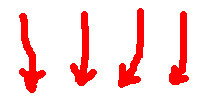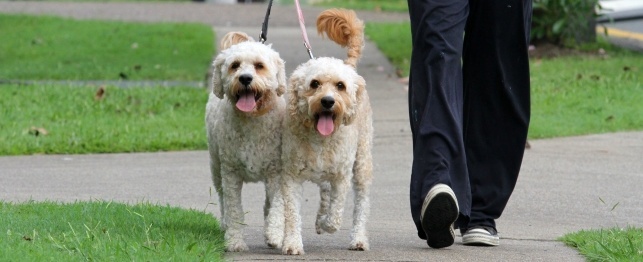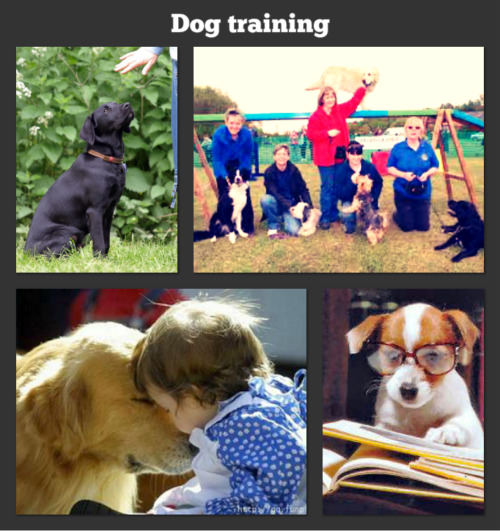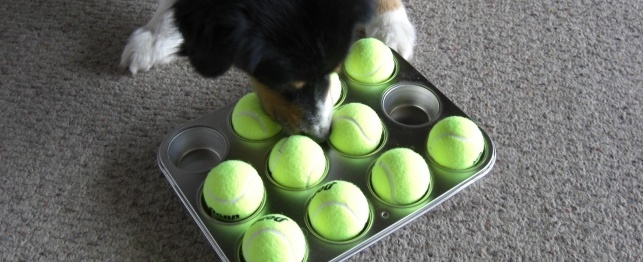Finally, the day has come. Your brand new puppy is old enough to come home and become a member of your family. Everyone is so excited! And she is so cute and cuddly and so fun to play with. Your puppy can do no wrong.
UNTIL...What? There is garbage all over the floor for the hundredth time. Your brand new $50 shoes are in pieces all over the floor. The remote control mysteriously disappears. And, the final straw, after hearing her whining through the night, you step in dog poop.
FRUSTRATING! Your loving feeling you once had for your cute, adorable puppy turns into disgust and hate. The sad thing is, this can all be avoided. That puppy only wants to be loved. She just hasn't been taught what she needs to know to be a welcome addition to the family. With a little bit of patience and a lot of love, you can train your puppy or dog how to live peacefully and happily in your home.
Your dog needs guidance and education. Training your dog challenges and stimulates his mind. You can start to train your dog as early as three to four months. There are many dog training books available to help you teach your dog the necessary commands. Dog behavior problems can be solved or avoided when using specific commands. It is very important to start in a quiet place, to avoid distractions.
Be sure your dog understands that you are the boss. He is to do what you tell him, not the other way around. A dog's nature is to live in a pack. Within that pack is the Alpha-dog. You need to show him you are the Alpha-dog. One way to do this is to keep eye contact with him. Do not raise your voice. Screaming at your dog will not help him understand what you are saying. This will only scare him. With a slow, quiet voice give short, concise commands.
There are many commands and tricks to teach your dog. The most common commands are come, sit, stay, and heel. Many common tricks are shake, fetch, roll-over, and speak. Dogs are capable of learning multiples of commands and tricks. According to the Guinness Book of World Records, Chanda-Leah, born in Jan.1, 1994, weighing at only 7 and a half pounds performs 1064 tricks and loves it. This could be your dog. So have fun and enjoy the love of your dog.
PRAISE!PRAISE!PRAISE! A dog learns from pleasing or displeasing reactions. When teaching him a command, as in sit, let him know he has done a good job. He is more likely to repeat this command, if he feels he has done something to please you. Verbal and physical praises are an important process in training. There are many different ideas on whether you should give a dog treats for praise. Giving dogs treats in formal obedience training can be a positive reinforcement, just do not overdo it. And be sure your dog has performed the command you give him. If he starts to beg, jump on you, steal from your plate, or display bad behavior in connection with food, a dog should NEVER receive treats until the behavior is corrected.
DISCIPLINE as a training technique can be effective. The tone of your voice is important . Learn to say no without a whining, pleading tone. Go and get your dog. Never call a dog to you and then discipline it. Be sure to make eye contact. Never use an object to discipline. Be sure to discipline correctly and on a level your dog can understand.
It is essential to make up with your loyal dog. After you discipline your dog, you should remain passive for at least half an hour. Do not speak to the dog and avoid eye contact. Your dog should submit to you by either looking away or gazing down at the floor. If you go to your dog before it has time to readjust, he will shake and whine, which will make you feel guilty. Don't fall into this trap. He will not learn!
Training your dog can be a frustrating and enjoyable time. And, once you see that unconditional love and respect from your dog's eyes, it is all worth the time and effort you have sacrificed.

 Stop Dog Digging: Find Fun And Easy Ways To Train Your Dog
A lot of people are trying to maintain a clean home these
Stop Dog Digging: Find Fun And Easy Ways To Train Your Dog
A lot of people are trying to maintain a clean home these
 How Much Exercise Does My Dog Need?
How Much Exercise Does My Dog Need?
How Much Exercise Does My Dog Need?
How Much Exercise Does My Dog Need?
 Does Your Dog Need More Exercise?
Does Your Dog Need More Exercise?
Does Your Dog Need More Exercise?
Does Your Dog Need More Exercise?
 How To Use Vibration Dog Training Collars
All dogs need training at least, no matter how smart the do
How To Use Vibration Dog Training Collars
All dogs need training at least, no matter how smart the do
 The Fabulous Muffin Tin Game for Dogs
The Fabulous Muffin Tin Game for Dogs
The Fabulous Muffin Tin Game for Dogs
The Fabulous Muffin Tin Game for Dogs